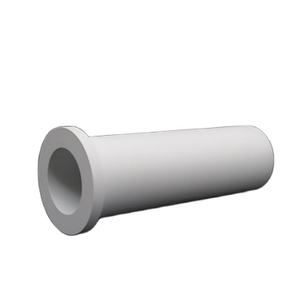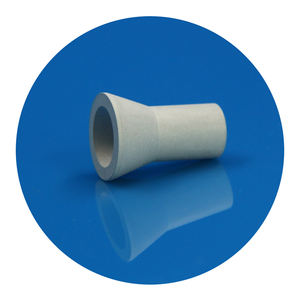Discover Premium Ceramic Products | Durability & Elegance United | Advanced Ceramics
PRODUCT PARAMETERS
Description
Overview of Boron Nitride Ceramic
Boron Nitride (BN) ceramic is a unique material renowned for its exceptional properties, making it highly valuable in various industrial applications. It exists in multiple forms, primarily hexagonal boron nitride (h-BN), cubic boron nitride (c-BN), and wurtzite boron nitride (w-BN). Hexagonal BN, the most common form, is often compared to graphite due to its lubricious and thermally conductive yet electrically insulating nature. Boron Nitride ceramics are synthesized under high temperatures and pressures, offering a rare combination of properties not found in many other materials.
Features of Boron Nitride Ceramic
Thermal Conductivity: Excellent thermal conductivity, especially in the hexagonal form, allowing efficient heat dissipation.
Electrical Insulation: Outstanding electrical insulation properties make it ideal for electrical applications requiring thermal management.
Chemical Stability: Highly resistant to chemical attacks, including strong acids and bases, ensuring durability in harsh environments.
Thermal Shock Resistance: Superior resistance to thermal shock, enabling it to withstand rapid temperature changes without cracking.
Mechanical Strength: Good mechanical strength at both room and elevated temperatures, although this can vary with the form of BN.
Lubricity: Self-lubricating property due to its layered structure, which reduces friction and wear in moving parts.
Non-Toxic: Safe to use in various settings, including medical and food processing industries, due to its non-toxic nature.
High-Temperature Performance: Maintains stability at extremely high temperatures, exceeding 1000°C in inert atmospheres, making it suitable for refractory applications.
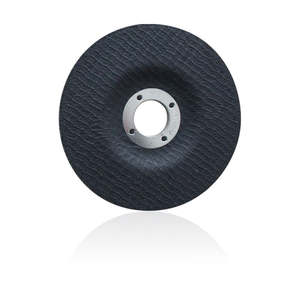
(Technical Ceramics s Pyrolytic Boron Nitride PBN Crucible for LEC MBE VGF)
Specification of Technical Ceramics s Pyrolytic Boron Nitride PBN Crucible for LEC MBE VGF
Pyrolytic Boron Nitride (PBN) crucibles serve high-temperature processes in semiconductor and crystal growth applications. These crucibles work with methods like Liquid Encapsulated Czochralski (LEC), Molecular Beam Epitaxy (MBE), and Vertical Gradient Freeze (VGF). PBN offers exceptional thermal stability and chemical resistance. The material withstands extreme conditions without degrading.
PBN crucibles are made using chemical vapor deposition. This creates a highly pure, dense structure. Typical purity levels exceed 99.99%. The absence of impurities prevents contamination of sensitive materials like gallium arsenide or indium phosphide. Thermal conductivity is high, around 60 W/m·K. This ensures even heat distribution. The maximum operating temperature reaches 1800°C in inert atmospheres.
Mechanical specifications vary. Standard diameters range from 50 mm to 200 mm. Wall thickness stays between 2 mm and 5 mm. Custom sizes are available. The crucibles feature a cylindrical shape with a flat or rounded base. Surface finishes are smooth to minimize material adhesion.
In LEC systems, PBN crucibles handle molten metals and salts. They resist reactions with corrosive encapsulants. For MBE applications, the crucibles evaporate source materials uniformly. Their low outgassing rates maintain ultra-high vacuum conditions. VGF processes use PBN to grow large single crystals. Thermal gradients are controlled precisely.
PBN outperforms traditional materials like quartz or graphite. It does not react with most chemicals. Thermal shock resistance is superior. Rapid temperature changes cause no cracking. The material’s non-wetting property prevents sticking. This extends crucible lifespan.
Custom designs meet specific process needs. Options include tailored geometries, coatings, or integrated thermocouple slots. Each crucible undergoes rigorous quality checks. Defects like cracks or porosity are eliminated.
PBN crucibles are reliable for critical applications. They ensure consistent performance in harsh environments. Users benefit from reduced downtime and higher product yields.
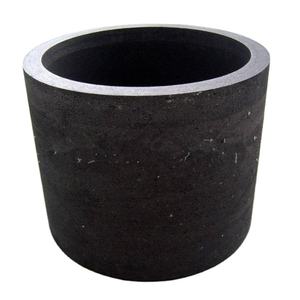
(Technical Ceramics s Pyrolytic Boron Nitride PBN Crucible for LEC MBE VGF)
Applications of Technical Ceramics s Pyrolytic Boron Nitride PBN Crucible for LEC MBE VGF
Pyrolytic Boron Nitride (PBN) crucibles are essential tools in advanced materials processing. These crucibles excel in high-temperature environments. They handle extreme conditions in crystal growth methods like Liquid Encapsulated Czochralski (LEC), Molecular Beam Epitaxy (MBE), and Vertical Gradient Freeze (VGF). PBN’s unique properties make it ideal for semiconductor manufacturing.
PBN crucibles offer high thermal conductivity. This ensures even heat distribution during processes. They resist chemical reactions with molten materials. This prevents contamination in sensitive applications. Their low electrical conductivity adds stability in electrically active setups. These features are critical for producing high-purity crystals.
In LEC systems, PBN crucibles grow single crystals like gallium arsenide. The method requires stable materials to handle molten metals and encapsulants. PBN withstands thermal stress better than quartz or graphite. It maintains structural integrity over repeated cycles. This reduces downtime and costs.
For VGF growth, PBN crucibles enable precise temperature control. The gradual cooling process needs uniform heat management. PBN’s thermal properties ensure consistent crystal quality. This method produces low-defect materials for optoelectronics and power devices.
MBE systems use PBN crucibles for thin-film deposition. The ultra-high vacuum environment demands materials with minimal outgassing. PBN’s purity prevents unwanted particles in the deposition chamber. This results in high-performance semiconductor layers.
PBN crucibles resist thermal shock. They handle rapid temperature changes without cracking. This durability extends their lifespan. Users save on replacement costs. The material’s non-wetting surface allows easy removal of solidified melts. Cleaning is simpler compared to other crucible types.
Industries requiring high-purity materials rely on PBN crucibles. These include aerospace, telecommunications, and renewable energy. Custom shapes and sizes are available. They fit specific equipment needs. Manufacturers prioritize PBN for critical processes.
The combination of thermal, chemical, and mechanical advantages makes PBN crucibles a top choice. They support innovation in semiconductor technology. Performance and reliability drive their adoption across advanced manufacturing sectors.
Company Introduction
Advanced Ceramics founded on October 17, 2014, is a high-tech enterprise committed to the research and development, production, processing, sales and technical services of ceramic relative materials and products.. Since its establishment in 2014, the company has been committed to providing customers with the best products and services, and has become a leader in the industry through continuous technological innovation and strict quality management.
Our products includes but not limited to Silicon carbide ceramic products, Boron Carbide Ceramic Products, Boron Nitride Ceramic Products, Silicon Carbide Ceramic Products, Silicon Nitride Ceramic Products, Zirconium Dioxide Ceramic Products, Quartz Products, etc. Please feel free to contact us.(nanotrun@yahoo.com)

Payment Methods
T/T, Western Union, Paypal, Credit Card etc.
Shipment Methods
By air, by sea, by express, as customers request.

5 FAQs of Technical Ceramics s Pyrolytic Boron Nitride PBN Crucible for LEC MBE VGF
Technical Ceramics’ Pyrolytic Boron Nitride (PBN) crucibles are designed for high-temperature applications like Liquid Encapsulated Czochralski (LEC), Molecular Beam Epitaxy (MBE), and Vertical Gradient Freeze (VGF). Here are answers to common questions about these crucibles.
What makes PBN crucibles suitable for crystal growth processes?
PBN has high purity and thermal stability. It resists reactions with molten materials. This prevents contamination. It handles extreme temperatures in processes like LEC and VGF. Its layered structure improves durability under thermal stress.
Can PBN crucibles be reused?
Yes. They withstand repeated heating and cooling cycles. Proper cleaning after each use is necessary. Avoid mechanical damage. Inspect for cracks or wear before reuse. This ensures consistent performance over time.
Which materials are compatible with PBN crucibles?
They work with gallium arsenide, indium phosphide, and other semiconductor compounds. PBN does not react with most metals or oxides. Check compatibility charts for specific materials. Avoid alkaline metals and strong acids.
How does PBN compare to quartz or graphite crucibles?
PBN outperforms quartz in thermal shock resistance. It has better chemical inertness than graphite. Graphite can release particles at high temperatures. PBN keeps materials cleaner. It lasts longer in harsh conditions.
What precautions are needed when handling PBN crucibles?
Avoid impacts or scratches. Use gloves to prevent oils from touching the surface. Store in dry, clean environments. Follow heating and cooling rate guidelines. Sudden temperature changes might cause cracks.
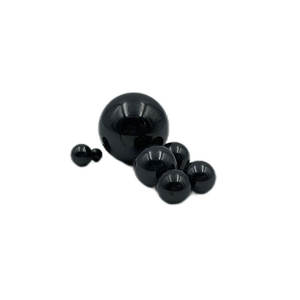
(Technical Ceramics s Pyrolytic Boron Nitride PBN Crucible for LEC MBE VGF)
REQUEST A QUOTE
RELATED PRODUCTS
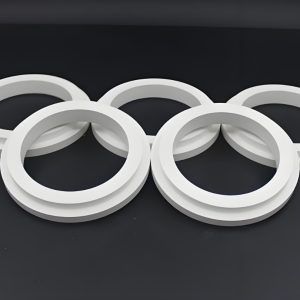
Hexagonal BN Boron Nitride Ring Insulating Ceramic Part
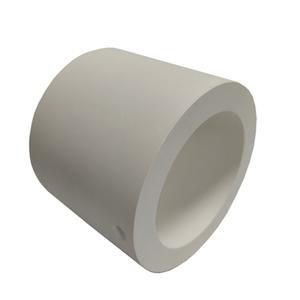
Soild Boron Nitride BN Ceramic Insulating Sleeves Tube
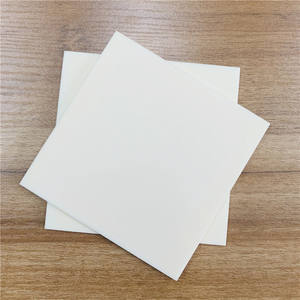
Industrial Grade Hexagonal Boron Nitride Coating Ceramic Cosmetic HBN Hexagonal Boron Nitride Powder
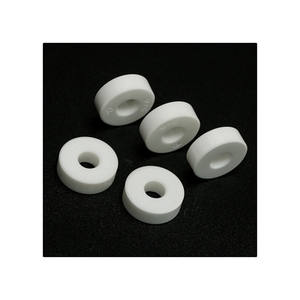
High Purity 99% Hexagonal Boron Nitride HBN Powder 1um, 10um for 3D Printing or Ceramics
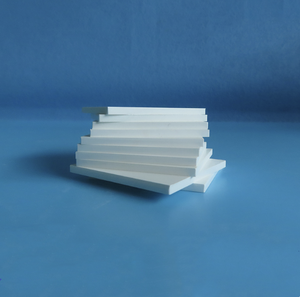
boron nitride ceramic Cylinder Block Drilled
